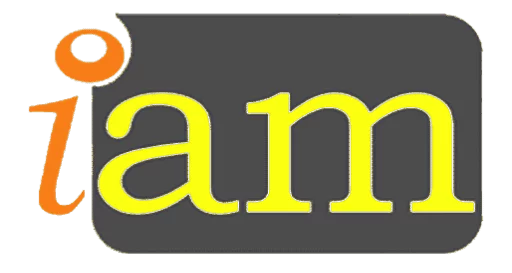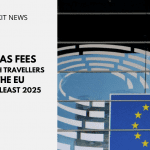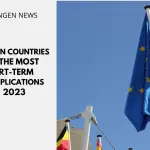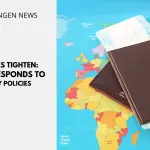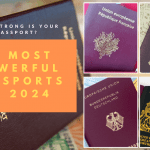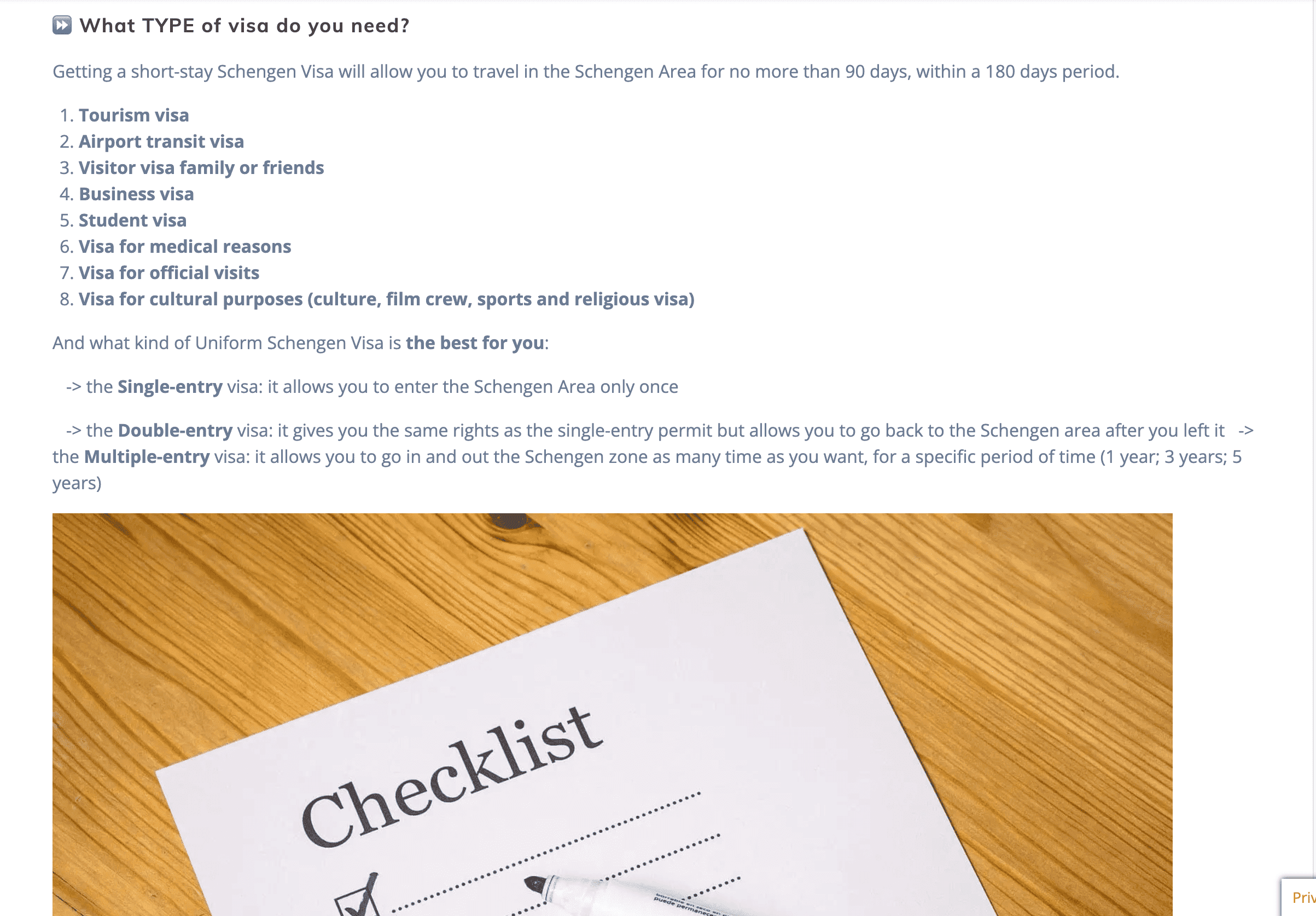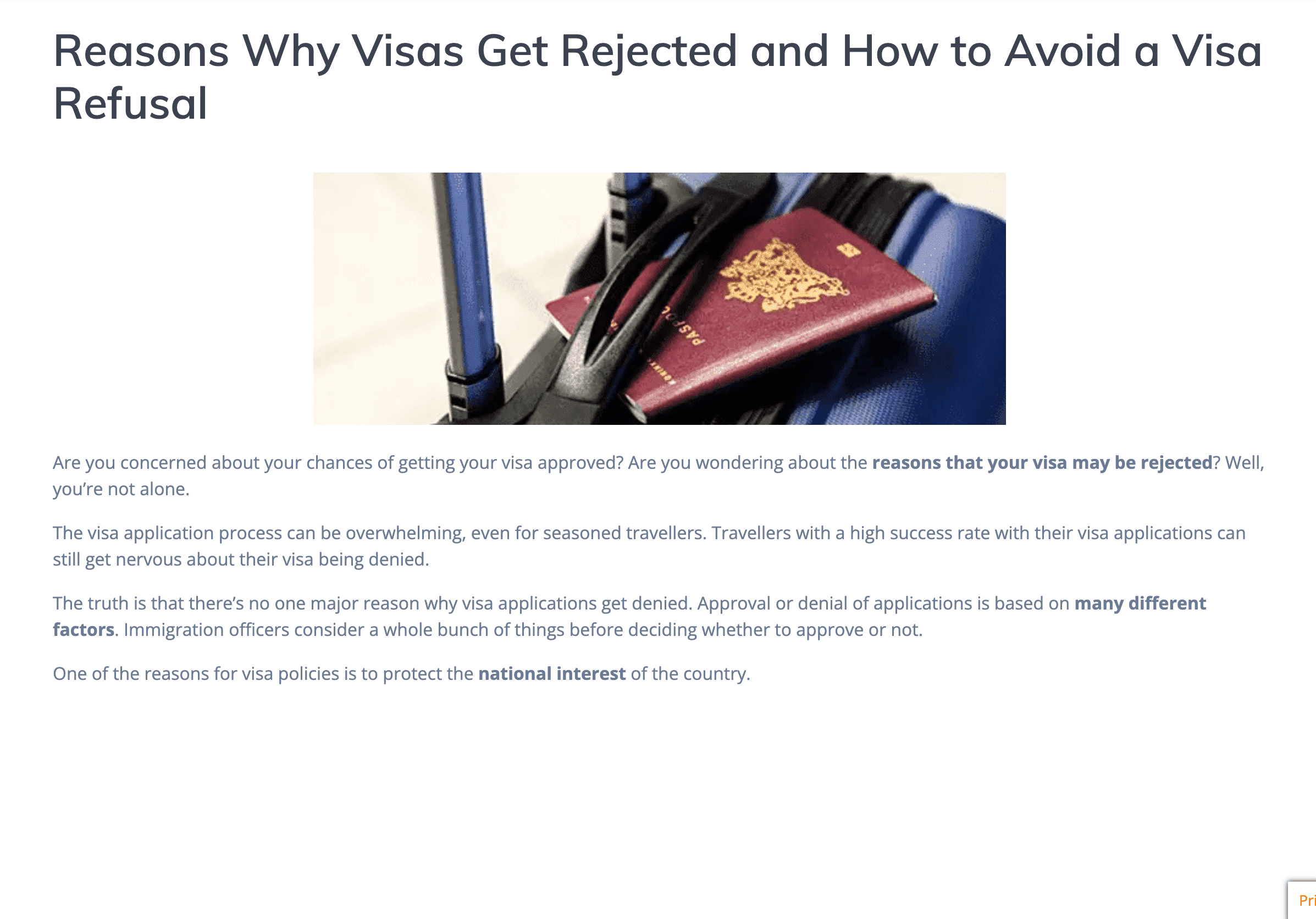The Schengen Zone finally opens borders after COVID-19
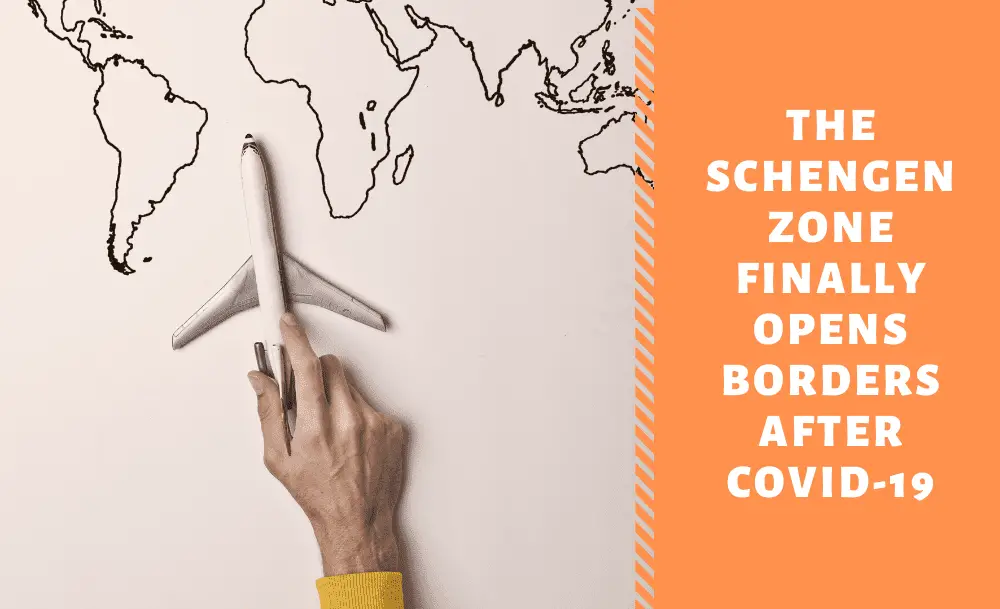
This article is not currently being updated.
It has been several months since each Schengen Member States closed their borders, despite the Schengen agreement being signed and in force, in a bid to slow down the infection rate of the novel coronavirus. This has affected the free movement and travel and has caused huge damage to the economy. Air traffic and internal borders of each state were restricted for essential travels only.
Tourism and travel industry plays a huge part of the Schengen economy. In 2019, the tourism sector contributed to 9.5 percent of the EU's GDP and accounted for 11.2 percent of the total labour force which is roughly 22.6 million jobs.
The member states lockdown and restriction response has paid off as the virus infection rate has relatively slowed down. Since the severity of the infection and outcome of the implemented measures varies from one member state to another, each member state has adopted slightly different policies with regards to travel restrictions and foreign tourists.
Some states have agreed to relax internal borders to their neighbouring countries to slowly boost the economy, especially tourism, but still maintain and monitor the health and safety of their citizens. Some internal borders remain closed and some states have started or planned to welcome tourists in a few days or the next month.
At the beginning of March, when the novel coronavirus was ravaging Italy, and IaM started the process of isolating members of staff and changing the way we work to a remote working practice, we made a bold prediction that Italy and the Schengen zone:
…by the summer, Italy will be back in full swing and as usual, just in time for the national holidays that take place in Italy in August
Italy Schengen Visa – IaM, 13 March 2020
Since then, we have all seen the coronavirus come under a coordinated response where the EU recommended member states to apply travel restrictions to the EU + area for 30 days. Then soon afterwards, the European Commission laid out a road-map for the lifting of travel restrictions to get travel started again in the EU.
As the containment measures have been working in Europe, certain countries have fared better than others in Europe and we have seen some Schengen States with very reduced infections and deaths from the novel coronavirus. As the situation has been stabilising, member states are making decisions to ease the restrictions.
Here is the current border situation of each Schengen member state.
🇦🇹 Austria
Travel Ban
In March, the state urged the public to refrain from all non-essential trips and imposed travel restrictions and quarantine measures
Opening Austria’s Borders
On 16 May 2020, the border to Germany, Liechtenstein, and Switzerland was relaxed, then the country opened all border crossings with Czech Republic, Slovakia, and Hungary the next day, carrying out only random border controls.
EU/EEA Nationals
On June 4, the country opened its land borders with Germany, Switzerland, Liechtenstein, Slovakia, Slovenia, Hungary and the Czech Republic.
As of July 11, travellers from the following countries can enter or leave Austria without restrictions as long as they have not been in any country other than Austria or the following European countries in the past 14 days: Andorra, Belgium, Denmark, Germany, Estonia, Finland, France, Greece, Ireland, Iceland, Italy, Croatia, Latvia, Liechtenstein, Lithuania, Luxembourg, Malta, Monaco, Netherlands, Norway, Poland, San Marino, Switzerland, Slovakia, Slovenia, Spain, Czech Republic, Hungary, Vatican and Cyprus.
Non-EU/EEA Nationals
Non-EU/EEA and Swiss citizens are not allowed to enter the state unless the traveller is a member of the staff of diplomatic missions and family members of these people living in the same household, humanitarian workers, health personnel, seasonal agricultural workers, transit passengers and people who work in freight transport. A negative test result needs to be presented to be allowed entry.
Other Measures
A negative test for coronavirus would still be necessary to return from Austria to the Czech Republic otherwise they have to go under the mandatory 14-day quarantine. This rule is not applicable to crew of passenger and cargo flights, mission flights, ambulance/rescue flights, repatriation flights and transfer flights for aviation personnel.
Update: There are no restrictions with most European Union countries except for travellers from the UK, Sweden, Spain, and Portugal who must still present a medical certificate and self-isolate. Italians can enter the country however a travel warning will be issued for the region of Lombardy.
Entry by air is prohibited to citizens coming from countries outside the Schengen Area.
🇧🇪 BELGIUM
Travel Ban
The state reintroduced all internal border controls last March.
Opening Belgium’s Borders
Belgium aimed to re-open the borders for tourists by 15 June 2020.
EU/EEA Nationals
Travellers from EU Member States, the UK, Switzerland, Liechtenstein, Iceland and Norway may enter Belgium.
Mandatory COVID-19 PCR test and quarantine will be required on arrival or return from designated red zone countries and is recommended for designated orange zone countries.
Non-EU/EEA Nationals
Non-essential travel from third countries is not allowed.
Other Measures
Tourists from Portugal, Sweden, the UK, North Macedonia and all other countries, are subject to 14 days of quarantine. Tourists who are not required to quarantine must submit a declaration on their observation of the Ministry of Health’s anti-epidemic measures and an acknowledgment of the risks of COVID-19 at the border.
🇨🇿 CZECH REPUBLIC
Travel Ban
On 13 March 2020, the Prime Minister announced they will be banning entry to travellers coming from Germany and Austria as well as foreigners from Italy, Sweden, France, The Netherlands, Belgium, Spain, Denmark, Britain, Norway, Switzerland. This also applies to non-European countries China, South Korea and Iran.
Czech citizens are also restricted from travelling to the highest affected countries.
Opening Czech Border
As of 26 May 2020, all road and railroad crossings are open for Austria and Germany with random checks
EU/EEA Nationals
Non-essential travel of tourists from EU countries is not recommended by the state, although restrictions are now starting to be lifted.
Non-EU/EEA Nationals
Travellers from countries with a low risk of infection can enter the state, however travellers from countries with a medium and high risk of infection will be required to quarantine if they cannot provide a negative COVID-19 test.
Other Measures
Travellers from green zone countries can travel without restrictions.
Travellers from yellow zone countries like France, Italy, and Spain, must have a valid health certificate to enter.
Travellers from red zone countries like UK and Sweden will be allowed to enter if they belong to the exempted categories. They are required to either quarantine or provide a certificate with a negative COVID-19 result.
🇩🇰 DENMARK
Travel Ban
The state has imposed travel restrictions since March 2020.
Opening Borders
Only citizens or residents of Greenland or Faroe Islands with essential purpose can currently enter the country.
The Danish government will announce the decision regarding border control on 1 June 2020.
EU/EEA Nationals
Danish nationals and persons resident in Denmark are free to enter Denmark.
Danish nationals will need to present their Danish passport as proof of nationality. Danish residents will need to present a personal identification document with proof of address in Denmark.
Denmark's borders are open to the following–
- Travellers from the EU Member States, except Portugal and Luxembourg
- Swedish citizens from Blekinge, Kronoberg, Skåne, and Västerbotten
- Travellers from the United Kingdom
Non-EU/EEA Nationals
Borders are open for some countries, namely: Australia, Canada, Japan, New Zealand, South Korea and Thailand.
Danish residents may also enter the country but need to present an identification document with proof of address in Denmark.
Third-country nationals who are not residents of Denmark may enter Denmark under the following conditions:
- Your purpose of travel is business. You will be required to bring documents like your employment contract, a recent payslip or other proof of the working relationship.
- You are a student, trainee or au pair in Denmark. You will have to bring documents, like a letter of confirmation from your educational institution, your trainee contract, or your residence permit.
- You have family or relatives in Denmark. You should bring proof of your relationships such as a marriage certificate or a birth certificate and a copy of the health insurance card of the Danish resident. Fiancés, stepparents, siblings, step-siblings, grandparents and step-grandparents will have to present a certificate with a negative COVID-19 result issued at not more than 72 hours before entry into Denmark.
Other Measures
People arriving in the country with clear symptoms of sickness like dry cough or will not be allowed to enter.
🇪🇪 ESTONIA
Travel Ban
The state has imposed border controls on 17 March 2020.
Opening Borders
As of 15 May 2020, the state allowed travel from Latvia, Finland and Lithuania if the traveller did not exhibit symptoms of coronavirus and has not travelled to any country for the past 14 days.
EU/EEA Nationals
Estonian citizens, people who have an Estonian residence permit or the right of residence, or a permanent residence in Estonia, may enter Estonia.
Estonit admits tourists from the European Union, the members of the Schengen area or the United Kingdom who have no symptoms.
Non-EU/EEA Nationals
Residents of Algeria, Australia, Canada, Georgia, Japan, Morocco, New Zealand, Rwanda, South Korea, Thailand, Tunisia and Uruguay may enter Estonia if they show no symptoms.
Third country citizens without symptoms may travel to Estonia for work or studies but must quarantine on arrival.
Other Measures
There is compulsory self-isolation for people arriving in Estonia if the infection rate from their country of origin is higher than 16 cases per 100,000 inhabitants. Anyone arriving in Estonia from a country with a higher infection rate must self-isolate for two weeks on arrival.
🇫🇮 FINLAND
Travel Ban
Travel restrictions were imposed March.
Opening Border
In mid-May, the state re-opened for workers from the Schengen Area.
EU/EEA Nationals
On 13 July 2020, internal border control was lifted for the Netherlands, Belgium, Italy, Austria, Greece, Liechtenstein, Malta, Germany, Slovakia, Slovenia, Switzerland and Hungary.
Internal border control is also lifted for travel to and from Norway, Denmark, Iceland, Estonia, Latvia and Lithuania and for leisure craft travel between Schengen countries.
Non-EU/EEA Nationals
Borders are open for residents of Algeria, Australia, Georgia, Japan, New Zealand, Rwanda, South Korea, Thailand, Tunisia, Uruguay and China.
Family members of Finnish citizens may enter the country regardless of nationality.
Other Measures
Finland recommends self-isolation for 14 days upon arrival from travellers arriving from outside the following countries: Schengen and EU countries as well as the UK, Algeria, Australia, China, Georgia, Japan, New Zealand, Rwanda, South Korea, Thailand, Tunisia and Uruguay.
🇫🇷 FRANCE
Travel Ban
As of 18 March 2020, the country cancelled non-European flights and all types of public road transport.
Essential travellers exempted from the ban are required to present certificates to prove the purpose of crossing the border.
Opening Borders
The country has eased restrictions and is planning to re-open on 15 June 2020.
EU/EEA Nationals
Travellers from EU, Schengen area and the UK may enter France, though there is voluntary quarantine for travellers from the UK and there will be quarantine for travellers with symptoms.
Non-EU/EEA Nationals
Third country nationals except Australia, Canada, Georgia, Japan, Montenegro, Morocco, New Zealand, Rwanda, Serbia, South Korea, Thailand, Tunisia, the UK and Uruguay, must:
1. Present a certificate corresponding to their situation (derogation to travel from abroad to metropolitan France or overseas territories).
2. Complete a self-declaration that they don’t have symptoms.
3. Carry out a quarantine upon arrival in France.
Other Measures
🇩🇪 GERMANY
Travel Ban
Travel restrictions were imposed March
Opening Borders
On 16 May 2020, the national borders between Austria and Switzerland were relaxed. Borders will open for EU travel on 15 June 2020.
EU/EEA Nationals
Travellers arriving from a risk area country will be subject to a mandatory 14-day quarantine.
Non-EU/EEA Nationals –
Travellers from Australia, Georgia, Canada, New Zealand, Thailand, Tunisia and Uruguay can enter without restrictions. Travellers from Japan, South Korea and China under condition of reciprocity.
Other Measures
Travellers arriving from a risk area country will be subject to a mandatory 14-day quarantine. Federal states issue the quarantine obligation under their own responsibility, which can be dispensed with if travellers have a medical certificate that confirms that there is no evidence of infection with the SARSCoV-2 coronavirus. The medical certificate must either come from an EU member state or another state published by the Robert Koch Institute and must not be older than 48 hours upon arrival.
🇬🇷 GREECE
Travel Ban
Travel restrictions were imposed March.
Opening Borders
Greece plans to open borders on 15 June 2020 or 1 July 2020.
EU/EEA Nationals
EU residents are allowed to travel to Greece.
Non-EU/EEA Nationals
International arrivals are allowed from Algeria, Australia, Canada, Georgia, Japan, Montenegro, Morocco, New Zealand, Rwanda, South Korea, Thailand, Tunisia and Uruguay. are allowed into all airports in Greece.
Visitors from air, land or sea, will be subject to random tests upon arrival. Upon being tested, travellers move to their final destination. In the event of a positive result, they will be contacted and placed on 14-day quarantine, with expenses covered by the Greek state.
Other Measures
All travellers entering Greece for non-essential reasons through Promachonas border station are obliged to present a negative molecular test result (PCR) for COVID-19 on arrival, performed up to 72 hours before their entry to Greece. Travellers should be laboratory tested with RT-PCR of oropharyngeal or nasopharyngeal swab.They must also complete their Passenger Locator Form.
🇭🇺 HUNGARY
Travel Ban
Travel restrictions were imposed mid-March.
Opening Borders
As of 15 July 2020, Hungary has divided countries into green, yellow and red categories. For each category, a different set of rules of entry, health and quarantine applies.
EU/EEA Nationals
Travellers can enter Hungary without any restrictions from countries belonging to the green category.
Hungarian citizens arriving from yellow or red countries are subject to health checks. If the health examination reveals a suspicion of infection, they will need to quarantine for 2 weeks.
Non-Hungarian citizens from red countries cannot enter Hungary.
Non-Hungarian citizens arriving from yellow countries must undergo medical examinations. If the health examination reveals a suspicion of infection, entry into Hungary will not be allowed. If there is no suspected infection, the traveler will be placed on 2 weeks quarantine.
Non-EU/EEA Travel
Third country nationals are not allowed to enter Hungary except for humanitarian purposes or in the following cases: third country citizens which are familiy members of an EU or EEA citizen, citizens of Serbia, nationals of Ukraine for a maximum period of 24 hours and within 30 km of the border area.
Special rules are established for citizens of Japan and South Korea for business purposes.
🇮🇸 ICELAND
Opening Borders
On 15 July 2020, Iceland extended travel restrictions imposed by the EU and Schengen states and lifted restrictions for residents of twelve non-EEA and Schengen. The travel restrictions do not apply to citizens and residents of Andorra, Monaco, San Marino and the Vatican.
EU/EEA Nationals
EU/EEA and EFTA citizens (including UK citizens) as well as citizens of Andorra, Monaco, San Marino and the Vatican may enter Iceland.
Non-EU/EEA Nationals
Foreign citizens with a valid residence permit in Iceland or any other EU/EEA or EFTA state (including UK) or Andorra, Monaco, San Marino or the Vatican as well as Algeria, Australia, Canada, Georgia, Japan, Morocco, New Zealand, Rwanda, South Korea, Thailand, Tunisia and Uruguay, may enter Iceland.
Relatives of Icelandic or other EU/EEA or EFTA citizens (including UK citizens) or citizens of Andorra, Monaco, San Marino or the Vatican as well as relatives of residence permit holders in Iceland or any other EU/EEA or EFTA state (including UK) or Andorra, Monaco, San Marino or the Vatican may visit the country.
Other Measures
Tourists are tested upon arrival an get the result within a few hours on their phone, after downloading a tracking app.
The test will cost 15,000 Icelandic Krona (€100) from July 1. Children born in or after 2005 will be exempt.
🇮🇹 ITALY
Travel Ban
Since early March the country has implemented strict lockdown measures.
Opening Borders
Italy opened its borders on 3 June 3 to EU, UK, Schengen area, Andorra and Monaco citizens, Vatican City and San Marino.
EU/EEA Nationals
Travellers from the following countries are allowed to enter Italy: member states of the EU and the Schengen areas, the UK, Andorra, Monaco, Vatican City State and the Republic of San Marino.
Non-EU/EEA Nationals
Entry into Italy from countries outside the EU and/or the Schengen Agreement continues to be allowed only for cases of proven work requirements, absolute urgency, health reasons or proven study requirements.
Third-country nationals from the following countries may enter Italy: Algeria, Australia, Canada, Georgia, Japan, Morocco, New Zealand, Rwanda, Republic of Korea, Thailand, Tunisia, Uruguay.
From 9 to 31 July, all persons not exempted who have travelled to or transited through or stayed in the following countries are not allowed to enter Italy,: Armenia, Bahrain, Bangladesh, Bosnia Herzegovina, Brazil, Chile, Kosovo, Kuwait, North Macedonia, Moldova, Montenegro, Oman, Panama, Peru, Dominican Republic, Serbia.
Other Measures
All travellers to Italy from any foreign location are required to provide a self-declaration form if they are stopped for checks.
🇱🇻 LATVIA
Travel Ban
Travel restrictions have been in place since March.
Opening Borders
The state has opened borders with Estonia and Lithuania on 15 May 2020 and Latvia’s state of emergency was set to end on 9 June 2020.
EU/EEA Nationals
Citizens of the EU, the EEA and Switzerland, and permanent residents in those countries, when travelling from their home countries to Latvia will not be required to undergo a 14-day quarantine if their home countries have maintained an incidence lower than 15 individuals in 100,000 who have fallen ill with COVID-19
Non-EU/EEA Nationals
Latvia adheres to the EU Recommendations. Additional national requirements can be applied.
🇱🇮 Liechtenstein
Travel Ban
Travel restriction has been in place since March
Opening Borders
Liechtenstein’s border with Switzerland is open. Entrance to Liechtenstein depends on Switzerland’s borders opening.
EU/EEA Nationals
Citizens of EU member countries, Schengen member countries and the UK are allowed to enter Liechtenstein.
Non-EU/EEA Nationals
Non-EU nationals are not able to travel in the country.
Other Measures
Anyone entering Switzerland from high-risk countries will be required to quarantine for 10 days.
🇱🇹 Lithuania
Travel Ban
Travel restrictions have been in place since March.
Opening Borders
As of 15 May 2020, the state relaxed travel restrictions with Latvia and Estonia.
EU/EEA Nationals
Citizens from the EEA, Switzerland and the United Kingdom, and persons lawfully residing in these countries, are allowed to enter Lithuania if the incidence of COVID-19 (coronavirus infection) in their country of origin has not exceeded 25 cases/100 000 population in the last 2 weeks.
Non-EU/EEA Nationals
Third country citizens may enter Lithuania after obtaining permission from Lithuanian authorities depending on the nature of the issue. Travellers legally residing in countries on the EU list of third countries are also allowed to enter Lithuania if their countries are not included in the list of the affected countries.
Other Measures
Self-isolation requirement for foreign arrivals depends on the origin of their point of travel.
🇱🇺 Luxembourg
Travel Ban
Travel restrictions have been in place since March.
Opening Borders
Luxembourg re-opened its border with Germany on 15 May 2020.
EU/EEA Nationals
Citizens of the EU, the UK and the Schengen area, as well as their family members, are allowed to enter Luxembourg.
Non-EU/EEA Nationals
Third-country nationals except the ones listed below may not enter Luxembourg until 15 September 2020.
Third-country nationals of the following countries may enter Luxembourg: Algeria, Australia, Canada, China (on condition of reciprocity), Georgia, Japan, Montenegro, Morocco, New Zealand, Rwanda, Serbia, South Korea, Thailand, Tunisia and Uruguay.
Travellers from the aforementioned countries will need official documents proving their residence in one of these countries translated into either English or one of the administrative languages of Luxembourg.
🇲🇹 MALTA
Travel Ban
On 13 March, the country started restricting border crossings to Italy, Germany, France, Spain and Switzerland.
EU/EEA Nationals
The travel ban has been lifted for countries with a Public Health Corridor (PHC) from Malta to travellers who have spent the previous 14 days in one of the specified countries. These countries are: Austria, Belgium, Bulgaria,Croatia, Cyprus, Czech Republic, Denmark, Estonia, Finland, France, Hungary, Iceland, Ireland, Italy, Germany, Greece, Latvia, Lithuania, Luxembourg, Norway, Poland, Slovakia, Spain, Switzerland, United Kingdom, Netherlands, Canada, Australia, New Zealand, South Korea, Andorra, Monaco, San Marino, China, Vatican City, Rwanda, Uruguay, Slovenia, Japan, Morocco, Thailand, Tunisia, Portugal, Romania, Lebanon, Indonesia, United Arab Emirates, Turkey, Jordan, Liechtenstein.
Non-EU/EEA Nationals
Non-EU/EEA countries with a PHC) from Malta are: Andorra, Australia, Canada, China, Monaco, New Zealand, San Marino, South Korea ,Vatican City, Rwanda, Uruguay, Slovenia, Japan, Morocco, Thailand, Tunisia, Portugal, Romania, Lebanon, Indonesia, United Arab Emirates, Turkey, Jordan, Liechtenstein.
Other Measures
Face masks are required in all public places.
🇳🇱 THE NETHERLANDS
Travel Ban
The state has imposed travel restrictions since 19 March 2020.
EU/EEA Nationals
Tourists from EU or Schengen countries can enter the Netherlands. Travellers from Sweden, the UK, Portugal Norte and Vale do Tejo,are strongly advised to go into quarantine for 14 days. Tourists must reserve their holiday accommodation before they travel to the Netherlands.
Non-EU/EEA Nationals
Permanent residents of Algeria, Australia, Canada, Georgia, Japan, Morocco, New Zealand, Rwanda, South Korea, Thailand, Tunisia and Uruguay are allowed entry into the Netherlands. Permanent residents of China may enter the Netherlands under condition of reciprocity.
Other Measures
Travellers from Sweden, Romania, Bulgaria, Segrià and La Mariña-Lugo in Spain, Vale do Tejo in Portugal and Leicester in the UK are strongly advised to self-quarantine for 14 days after arriving in the Netherlands.
Travellers from outside the EU, Schengen are and the UK except for Algeria, Australia, Canada, Georgia, Japan, Morocco, New Zealand, Rwanda, South Korea, Thailand, Tunisia, Uruguay, and China are also urged to self-quarantine.
🇳🇴 NORWAY
Travel Ban
Internal border control has been extended until August.
Opening Borders
On 13 May, borders were opened for EU citizens including UK, Iceland, Liechtenstein for work and for family members living in the country.
Norway allows seasonal workers who will work in agriculture and the green industry to still enter.
EU/EEA Nationals
Norway lifted its entry restrictions for travellers from Schengen and EEA countries, as long as the country of origin meets the epidemiological criteria defined by the Norwegian Institute of Public Health (NIPH). Travellers coming from a country or an area without sufficiently low transmission, you must go into quarantine for 10 days and must present written documentation that you are staying at a registered address in Norway, during the quarantine period.
Non-EU/EEA Nationals
No set date when the country will re-open to third-country tourists.
🇵🇱 POLAND
Travel Ban
Border restrictions were imposed starting 15 March 2020.
Opening Borders
Travel restrictions from borders with Germany, Lithuania, the Czech Republic and Slovakia were in place until 12 June 2020.
EU/EEA Nationals
Citizens of the European Union and EFTA and their spouses and children may enter Poland without a need to quarantine.
Non-EU/EEA Nationals
Third-country nationals may not enter Poland. The exemptions are:
- third-country nationals married to Polish citizens, whose parents are Polish citizens or are under the constant care of Polish citizens
- diplomats
- third-country nationals with the permanent or temporary residence or a work permit in Poland
- third-country nationals who run a means of transport for transporting goods
Other Measures
Starting 16 May 2020 there is no mandatory quarantine after crossing the border of the Republic of Poland constituting an internal border.
🇵🇹 PORTUGAL
Travel Ban
Border control has been imposed since 16 March 2020.
EU/EEA Nationals
Citizens of the EU and Schengen member countries may enter Portugal without a need to quarantine.
Non-EU/EEA Nationals
Only third country nationals from approved countries may travel to Portugal.
Flights to and from all non-European Union countries have been cancelled until further notice, with the following exceptions:
- Algeria, Canada, South Korea, Morocco, Tunisia, China;
- Essential travel from Portuguese-speaking countries and from the United States, (only flights to and from São Paulo and Rio de Janeiro in Brazil are permitted)
- Passengers must present proof of a negative COVID-19 test at the time of departure, taken within 72 hours before boarding.
Other Measures
There is no mandatory quarantine required.
🇸🇰 SLOVAKIA
Travel Ban
Last 13 March 2020 the country closed its borders to all foreigners except citizens of Poland. An Interior Ministry spokesperson stated that “no foreign citizens will be allowed to enter Slovakia”, adding “at the border crossings with Poland, only Polish citizens will be allowed to enter the country.”
Opening Borders
On 27 May 2020, the country opened the border for Hungary and the Czech Republic residents with some restrictions.
EU/EEA Nationals
EU citizens who have visited a country not listed as a “safe country” within the last 14 days, may enter Slovakia if they comply with the quarantine measures of the Public Health Authority.
Travellers from the following EU, EEA or Schengen countries can enter Slovakia without any restriction: Austria, Belgium, Croatia, Cyprus, Czech Republic, Denmark, Estonia, Faroe islands Finland, France, Germany, Greece, Hungary, Iceland, Ireland, Italy, Liechtenstein, Lithuania, Latvia, Malta, Monaco, the Netherlands, Norway, Poland, Slovenia, Spain and Switzerland.
Non-EU/EEA Nationals
Only travellers Australia, China, Japan, New Zealand and South Koreacan enter Slovakia.
Other Measures
Mandatory quarantine measures apply to those arriving from countries not considered to be safe. Travellers who have visited a country not present on the list of safe countries in the last 14 days will be isolated in a designated facility. Quarantine is not mandatory for holders of temporary or permanent residence in Slovakia from EU or Schengen, people who cross the borders for urgent personal reasons for no more than 24 hours and workers in the agricultural sector.
🇸🇮 SLOVENIA
Travel Ban
The Slovenian government imposed travel restrictions in March.
Opening Slovenia’s Borders
Slovenia opened borders on 15 May 2020 for Austria, Italy and Hungary.
EU/EEA Travel
Travellers with temporary or permanent residence in a safe/green list country and are travelling from these countries, may enter Slovenia without restrictions or quarantine.
Non-EU/EEA Travel
Travellers arriving in Slovenia from a red list country and travellers with a temporary or permanent residence in these countries will need to quarantine for 14 days.
Persons subject to quarantine may enter Slovenia only between 6:00 and 22:00 hours and only through Gruškovje, Obrežje (operates non-stop, 24/7), Metlika and Jelšane on the border with Croatia; Pince on the border with Hungary; Border crossing point for international air traffic – Jože Pučnik Ljubljana Airport (Brnik).
🇪🇸 SPAIN
Travel Ban
The country has imposed travel restrictions in March.
EU/EEA Travel
Residents of the European Union, the Schengen area, Andorra, Monaco, The Vatican City and San Marino.
Travellers must fill in a public health form or use the free app SPAIN TRAVEL HEALTH (SpTH). After completing the form, passengers will obtain a QR code which they must present on arrival in Spain.
Non-EU/EEA Travel
Travellers from Australia, Canada, Georgia, Japan, Montenegro, New Zealand, Rwanda, Serbia, South Korea, Thailand, Tunisia, and Uruguay may enter Spain
Travellers from Algeria, China, and Morocco may enter Spain under condition of reciprocity.
Other Measures
There is no mandatory quarantine.
🇸🇪 SWEDEN
Travel Ban
As of 19 March 2020, travel restrictions were imposed for all countries except Norway, Iceland, Liechtenstein, EU Member States, UK and Switzerland.
Opening Border
As of 15 May 2020, the country has opened borders for EU/EEA and Switzerland.
EU/EEA Travel
Citizens from the EEA countries, Switzerland and the United Kingdom may enter Sweden.
Non-EU/EEA Travel
Travellers from Algeria, Australia, Georgia, Japan, Canada, Morocco, Montenegro, New Zealand, Rwanda, Serbia, South Korea, Thailand, Tunisia and Uruguay may enter Sweden.
Citizens of other countries who have urgent needs or have essential functions in Sweden may also be allowed entry, including students and highly skilled professionals.
Other Measures
There is no mandatory quarantine in Sweden.
🇨🇭 SWITZERLAND
Travel Ban
Switzerland closed its borders to non-essential travel on 25 March 2020.
Opening Borders
On 16 May 2020, the national borders between Austria and Germany were relaxed.
EU/EEA Travel
Travellers from the EU and theSchengen states may enter Switzerland, although travellers from some countries may have to go into quarantine for 10 days.
Travellers subject to quarantine will be notified during the flight, aboard coaches and at border crossings. They will have to register with the authorities on arrival.
Non-EU/EEA Travel
Travellers from Algeria, Australia, Canada, Georgia, Japan, Morocco, New Zealand, Rwanda, South Korea, Thailand, Tunisia, and Urugay. Travellers from China can also expect to be allowed entry into Switzerland soon on the condition of reciprocity.
Other Measures
Travellers from some countries may be asked to quarantine.
🇺🇸 UNITED STATES
Although not a Schengen Country, the US deserves a footnote mention.
At the beginning of the Coronavirus outbreak in the US, on 11 March, President Trump signed a third proclamation suspending flights and entry to the United States of aliens who were physically present in the Schengen Area within the two weeks preceding their entry or attempted entry into the US.
The proclamation became effective on 13 March, giving 2 days for travellers to enter the US before being barred from entry.
Banned Countries
With specific exceptions, foreign nationals who have been in any of the following countries during the past 14 days may not enter the United States.
- China
- Iran
- EU and Schengen States (Austria, Belgium, Czech Republic, Denmark, Estonia, Finland, France, Germany, Greece, Hungary, Iceland, Italy, Latvia, Liechtenstein, Lithuania, Luxembourg, Malta, Netherlands, Norway, Poland, Portugal, Slovakia, Slovenia, Spain, Sweden, Switzerland, Monaco, San Marino, Vatican City)
- United Kingdom (England, Scotland, Wales, Northern Ireland)
- Republic of Ireland
- Brazil
Exceptions apply to citizens and lawful permanent residents of the United States, some family members, and others who meet specified exceptions. Travelers arriving from these countries are advised to quarantine for 14 days.
This article will be updated as news becomes available. In the meantime, let us know how these travel restrictions affected you and when you plan on travelling again.
- Portugal Plans For Longer Residency and Stricter Visa Rules Ahead - 9 July 2025
- EES Gets Green Light For Phased Border Control Rollout - 8 July 2025
- ESTA Fee for US Travel Set To Increase - 7 July 2025
